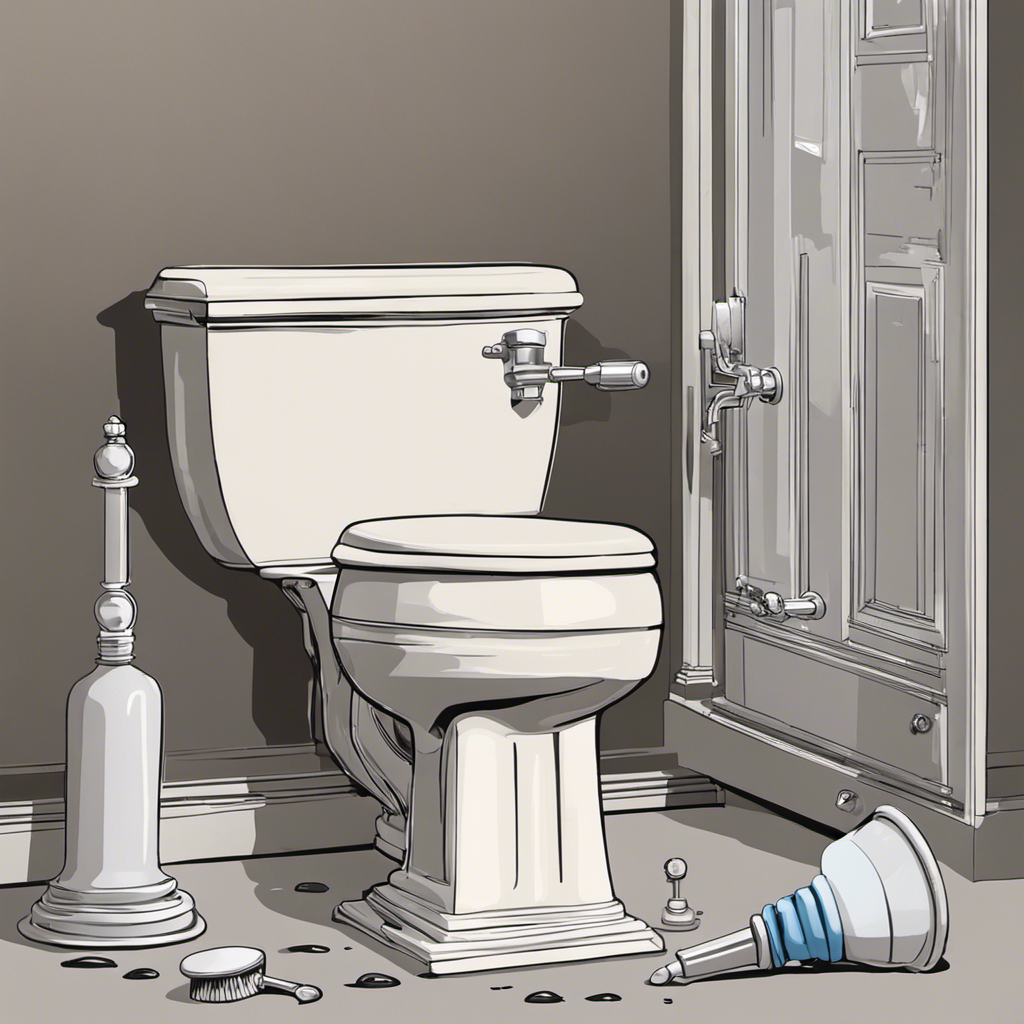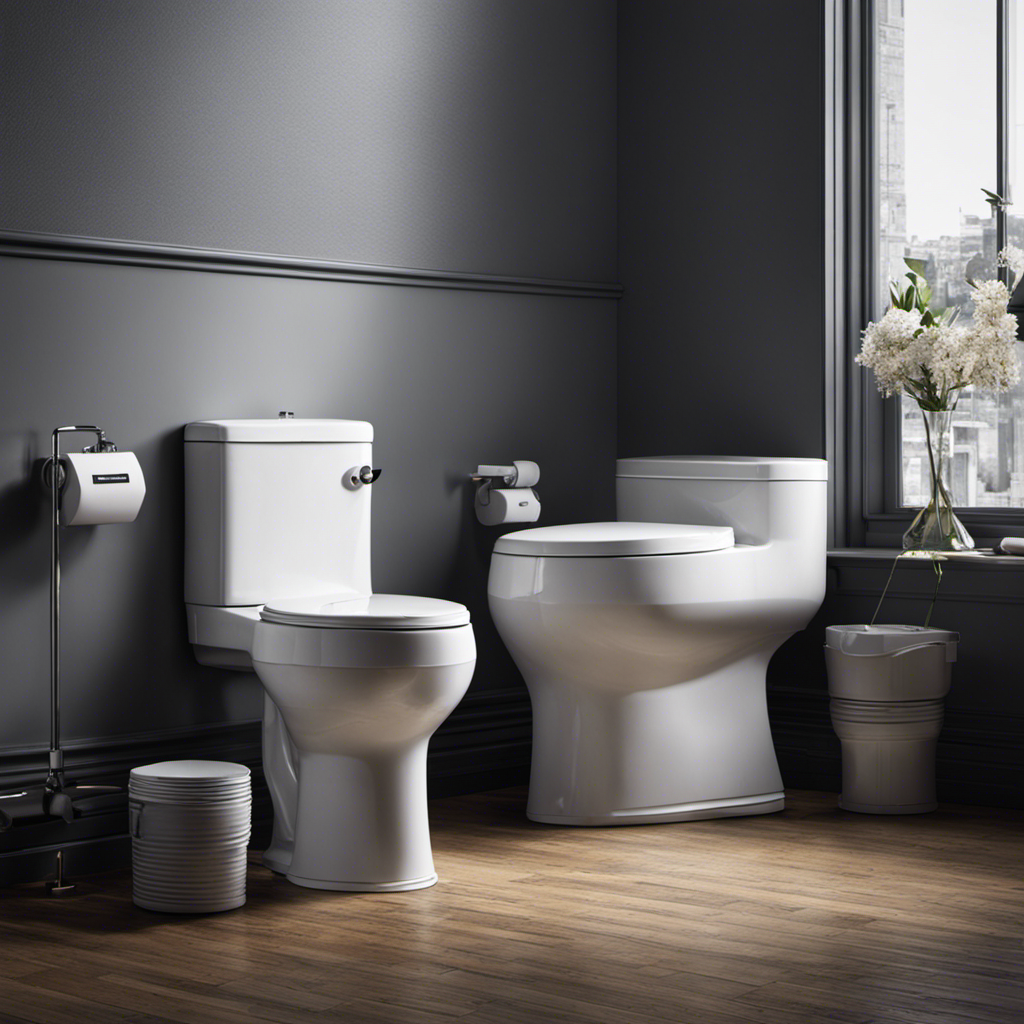Hey there!
Ever had that heart-stopping moment when you realize your toilet is clogged with, well, you know, poop? Don’t worry, I’ve got you covered.
In this article, I’ll share my expert tips and tricks on how to unclog a toilet with poop. I’ll walk you through the common causes of toilet clogs, the essential tools you’ll need, and a step-by-step guide to clearing the clog.
Plus, I’ll share some effective home remedies and maintenance practices to prevent future clogs.
Let’s dive in and tackle this stinky situation together!
Key Takeaways
- Water rising to the rim when flushing is a common cause of toilet clogs.
- Slow drainage can indicate a clogged toilet.
- Excessive toilet paper usage can lead to clogs.
- Flushing non-flushable items can cause toilet clogs.
Understanding the Common Causes of Toilet Clogs
Understanding the most common causes of toilet clogs can help you prevent future blockages. Toilet clog prevention is essential to maintaining a properly functioning bathroom.
One of the key signs of a clogged toilet is water rising to the rim when you flush. This indicates that the water is not properly draining, and there is a blockage somewhere in the pipes. Another sign is slow drainage, where water takes longer than usual to empty from the bowl.
The most common causes of toilet clogs are excessive toilet paper usage, flushing non-flushable items such as wipes or feminine hygiene products, and a buildup of mineral deposits or hard water residue.
Essential Tools and Materials for Unclogging a Toilet
To effectively tackle this task, you’ll need a few essential tools and materials.
When it comes to toilet unclogging techniques, having the right tools can make all the difference. First and foremost, a plunger is a must-have. Choose a sturdy plunger with a flange for better suction.
Additionally, a toilet auger or snake can be useful for more stubborn clogs. This tool allows you to manually unclog the toilet by breaking up the blockage.
You may also need a bucket for water removal and a pair of rubber gloves to protect your hands.
Troubleshooting toilet clogs requires patience and the right tools. By investing in these essentials, you’ll be well-prepared to handle any clog that comes your way.
Step-by-Step Guide to Clearing a Clogged Toilet
When tackling a clogged toilet, the first step is to gather the necessary tools and materials. It’s important to be prepared before attempting to clear the blockage.
However, in some cases, alternate methods may be needed or professional assistance might be required. If the clog is severe or if you have tried multiple techniques without success, it may be wise to seek the help of a professional plumber. They have the expertise and specialized tools to handle even the most stubborn clogs.
Additionally, there are alternate methods you can try before calling for assistance. For instance, you could use a plunger or a plumbing snake to dislodge the obstruction.
Remember to always exercise caution and follow safety guidelines when attempting to unclog a toilet.
Effective Home Remedies to Break Down Toilet Clogs
One effective home remedy for breaking down toilet clogs is to pour a mixture of hot water and dish soap into the bowl. This method is a popular DIY toilet unclogging method that utilizes common household items.
To begin, fill a bucket with hot water, ensuring it is not boiling as this may damage the porcelain. Add a generous amount of dish soap to the water, as it helps to lubricate and break down the clog. Carefully pour the mixture into the toilet bowl, aiming for maximum coverage.
Allow the solution to sit for a few minutes, giving it time to penetrate and soften the clog. Finally, use a plunger to gently and steadily apply downward pressure, creating a suction that can dislodge the clog.
Preventing Future Toilet Clogs: Maintenance and Best Practices
Regularly maintaining your toilet and implementing best practices can help prevent future clogs. Here are four key tips for toilet clog prevention and routine toilet maintenance:
-
Use the right amount of toilet paper: Excessive toilet paper can easily lead to clogs. Use only a reasonable amount and consider using thinner or septic-safe toilet paper.
-
Avoid flushing non-flushable items: Flushing items like wipes, feminine hygiene products, or cotton balls can cause serious clogs. Dispose of these items in the trash instead.
-
Regularly clean the toilet bowl and jets: Build-up of mineral deposits or bacteria can hinder the proper flow of water, leading to clogs. Use a toilet cleaner and scrub the bowl regularly, focusing on the jets and rim.
-
Inspect the toilet tank and flapper: Ensure that the flapper is sealing properly and the tank components are functioning effectively. Faulty parts can result in inconsistent flushing and potential clogs.
Conclusion
In conclusion, investigating the truth behind the theory of unclogging a toilet with poop has revealed that it is not a recommended or effective method.
While it may seem like a quick fix, using poop to unclog a toilet can lead to further plumbing issues and potential health hazards.
It is important to rely on proven methods and tools, such as a plunger or a toilet auger, to effectively clear a clogged toilet.
Additionally, practicing regular toilet maintenance and following best practices can help prevent future clogs.










